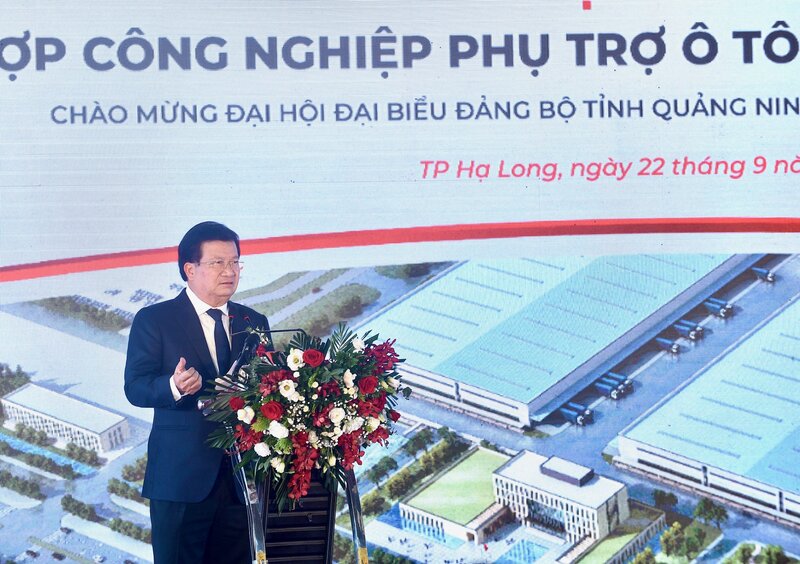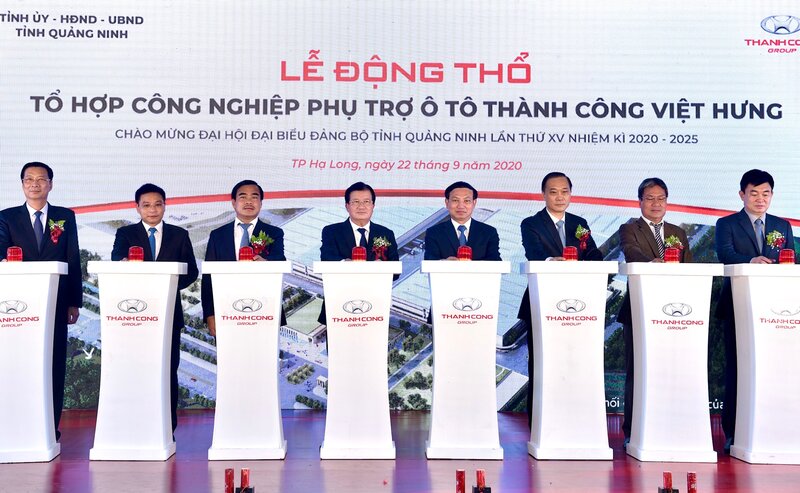Vietnam aims to have locally-made cars: Deputy PM
The government has changed its development strategy for the automobile industry, given the fact that it’s not feasible to produce one entire car in Vietnam.
The Vietnamese government aims to have locally-made cars with high quality and affordable prices, according to Deputy Prime Minister Trinh Dinh Dung.
| Deputy Prime Minister Trinh Dinh Dung at the ceremony. Photo: VGP. |
To achieve this target, Vietnamese enterprises must further integrate into global automotive value chains and increase the localization rate in the process of car manufacturing and assembling, said Mr. Dung at the groundbreaking ceremony of the Thanh Cong Viet Hung automotive supporting industry complex in the northern province of Quang Ninh on September 22.
The complex is built on an area of 340 hectares near Cua Luc Bay, making it a strategic location for domestic and international trading activities.
In the coming time, the complex is expected to attract companies manufacturing auto parts and components, especially those with high technological content.
Mr. Dung said the government is committed to creating utmost favorable conditions to promote the development of the automobile industry.
Notably, the deputy PM said the government has changed its strategy for automobile industry, given the fact that it’s not feasible to produce one entire car in Vietnam. Therefore, instead of setting impractical targets of specific localization rate, the industry should try to integrate deeply into the global value chains.
| Overview of the ground breaking ceremony. Photo: VGP. |
In this regard, Vietnam would encourage major auto manufacturer to assemble their products in the country with attractive incentives, rather than importing completely-built units, Mr. Dung added.
While the government supports local enterprises to develop and manufacture Vietnamese car models with a high localization rate, auto assemblers could also receive incentives so that they could assemble various types of cars, including the world’s major brands right in Vietnam.
Mr. Dung acknowledged the supporting industries in general, and supporting industries for the automobile industry in particular, are lacking market leaders that could spur the development of the sector through making orders, supporting other in the sector with technologies or in enhancing their corporate governance, among others.
Mr. Dung expected products from the complex would not only supply for the manufacturing process of Thanh Cong Group, but also for exports and help Vietnam’s automotive supporting industries narrow the development gap with regional and international markets.
The ultimate goal is to ensure Vietnam’s automobile industry is capable of meeting domestic demand and exports, Mr. Dung concluded.
A report from the Ministry of Industry and Trade revealed for passenger cars of under nine seats, the localization rate is 7 – 10%, much lower than the government’s target of 60% set in 2010, and the average 65 – 70% of countries in ASEAN, and especially in the case of Thailand, it is nearly 80%.
Deputy Minister of Industry and Trade Do Thang Hai previously said the Vietnam’s automotive industry lags around 30 years behind neighboring countries such as Thailand, Indonesia and Malaysia and huge challenges remain for Vietnam to catch up with.













